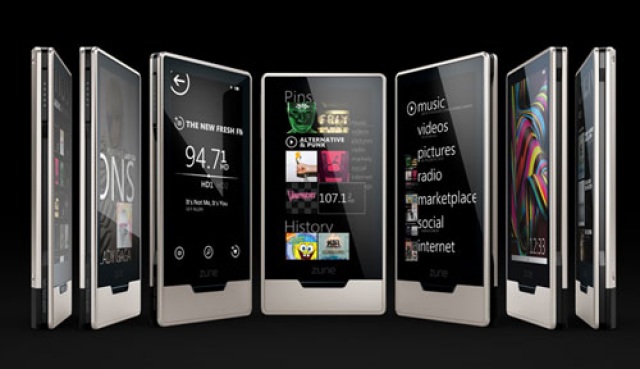So for example, when we got to the point of Phone, Albert [Shung, from the Windows Phone team] gave me his motion designers to commonize some of our transitions, and things like that. I gave them back some of our designers that were working on the grid to make sure we get these grid segmentations right, and then we loan it to Xbox to think about how the commanding works in a console space, which is different than how it works in an interaction space.
The main thing that we do is in terms of alignment—the place where we're most aligned—is in principles. We all share the five Metro principles that we talk about, and then we give each other a little bit of room to be specific to the console so that if you're doing Kinect it's different than what you do with touch, so there's some very important places that we don't map one to one.

Once upon a time, this was Metro - On the Zune HD
The hard part of this Metro approach is not to have consistent interface, but to have a consistent feel over the range. That's the tricky part. The Zune HD is a small screened media player with a predominant focus on music, Windows Phone does have music is far more information based. The Xbox is a games machine (that's morphing into an on-demand set top box) while Windows 8 is a re-invention of the large screened computer interface.
All of these are different, yet the goal of having them work in "the same way" is a huge one. The Microsoft of five years ago started down this design path, and as the destination becomes clear, the scope of hat they are doing still leaves me feeling a bit dizzy. Now imagine having to design it all?
That's why Buchanan's interview is so interesting to me.
